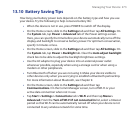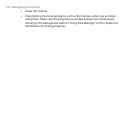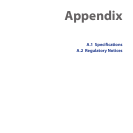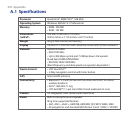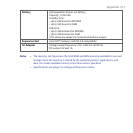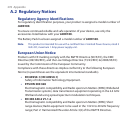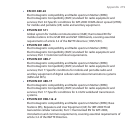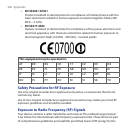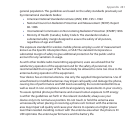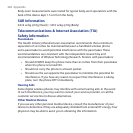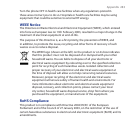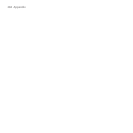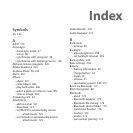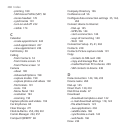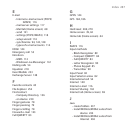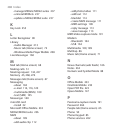Appendix 281
general population. The guidelines are based on the safety standards previously set
by international standards bodies:
• American National Standards Institute (ANSI) IEEE. C95.1-1992
• National Council on Radiation Protection and Measurement (NCRP). Report
86. 1986
• International Commission on Non-Ionizing Radiation Protection (ICNIRP) 1996
• Ministry of Health (Canada), Safety Code 6. The standards include a
substantial safety margin designed to assure the safety of all persons,
regardless of age and health.
The exposure standard for wireless mobile phones employs a unit of measurement
known as the Specific Absorption Rate, or SAR. The standard incorporates a
substantial margin of safety to give additional protection for the public and to
account for any variations in usage.
As with other mobile radio transmitting equipment, users are advised that for
satisfactory operation of the equipment and for the safety of personnel, it is
recommended that no part of the human body be allowed to come too close to the
antenna during operation of the equipment.
Your device has an internal antenna. Use only the supplied integral antenna. Use of
unauthorized or modified antennas may impair call quality and damage the phone,
causing loss of performance and SAR levels exceeding the recommended limits as
well as result in non-compliance with local regulatory requirements in your country.
To assure optimal phone performance and ensure human exposure to RF energy
is within the guidelines set forth in the relevant standards; always use your
device only in its normal-use position. Do not touch or hold the antenna area
unnecessarily when placing or receiving a phone call. Contact with the antenna
area may impair call quality and cause your device to operate at a higher power
level than needed. Avoiding contact with the antenna area when the phone is IN
USE optimizes the antenna performance and the battery life.



